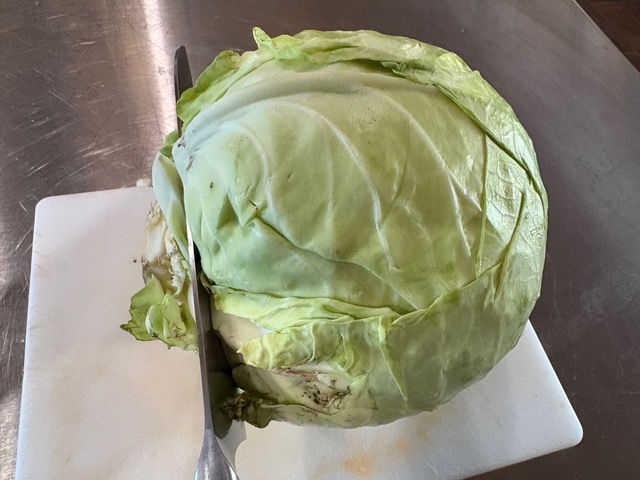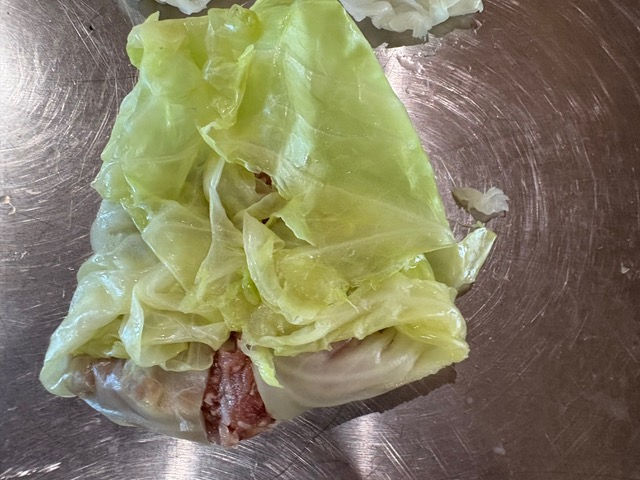I'm Stuffed!
- andreasachs1
- Oct 3
- 5 min read
By Bonnie Fishman / San Francisco Bay Area

A wonderful quality about serving vegetables is their diverse ability to be stuffed. Many food cultures use a wide variety of such veggies. Commonly stuffed vegetables include eggplant, zucchini, winter squashes, tomatoes, peppers and even artichokes. Mushrooms are also very popular: the smaller mushrooms are used for appetizers and larger portobellos as entrées.
Food rolled up in greens such as grape leaves or cabbage has many options. Besides meat, they can be filled with grains, such as rice, or diced cook vegetables, held together with cheese or eggs.
Stuffed cabbage has a long history. There are records that show it was enjoyed by Jews over 2,000 years ago. Today, it still shows up in delis and in kitchens around the world. Many countries in Eastern Europe, the Balkans, and the Near East claim stuffed cabbage as their own. It’s a hearty and economical dish particularly enjoyed in colder weather.
The principal idea of stuffed cabbage is the same - laying blanched cabbage leaves out on your work surface, placing the filling along one edge, and rolling it up tight. Usually, it is cooked in a sauce and or placed in a casserole and baked.
Each country has a variation of the same theme. Ground meat (beef, pork, lamb, or poultry) is the base, often mixed with rice, onions, and their traditional herbs and spices. The Europeans and Balkans generally use the garden variety head of green cabbage. As you venture east, the cabbage of choice is Napa or Chinese. When using these cabbages, often two leaves are used overlapping to create one roll.
On a recent trip to Hungary in June, I was on the hunt for a traditional meal of stuffed cabbage. I have several friends of Hungarian descent, and they claim that their country makes the best. I wanted to see for myself. But, alas, it was a more difficult task than I thought.
On our first day in Budapest, my husband Bob and I headed to the famous Central Market Hall, also called The Great Market Hall. It was pretty great! Not only was it a huge, beautiful example of neo-Gothic design, it had a variety of food purveyors on the main floor. Paprika and sausages were not in short supply. Upstairs was a jam-packed corridor of prepared foods to take away or eat teetering your plate on a narrow ledge or your lap if you were lucky enough to cop a seat.
(clockwise from top left): The Neo-Gothic Central Market Hall; the main hall of the Central Market, flanked by food stalls; there was no shortage of sausages; an abundance of paprika,
We decided to check out the entire hallway before we made a selection. The first booth had good-looking goulash, grilled sausages, and yes, stuffed cabbage. I took a mental note of it all. After perusing all that was available, we returned to the first booth. I was really disappointed. The stuffed cabbage was all gone!
On our last night in Budapest, we went to a charming traditional Hungarian restaurant. I would surely get great stuffed cabbage here. But no, they didn’t make it on Tuesdays, and we were there on a Monday! It was not meant to be.
After being shut out of the one entrée that I couldn’t get on my trip, I decided to make my own, dammit! I will tell you, stuffed cabbage is a labor of love.
Stuffed Cabbage
Yield: 8-10 servings (16-18 rolls)

There are four main steps before you actually cook it: the sauce, the filling, preparing the cabbage, and assembly. Separating the cabbage leaves is my least favorite task. If you want to have even sizes rolls, you may need to purchase two heads to ensure only the largest leaves are available to use.
If you choose to make a double batch, it might be helpful to enlist a friend or family member to pitch in on the stuffing and rolling. That part is actually fun.
My recipe is a traditional one from Eastern Europe. I would offer up my mom’s recipe, except she used sour salt, which is not easy to come by. Instead, to create the sweet/sour taste, I mix brown sugar and vinegar into the sauce. I also use a combination of ground beef and turkey to cut down on the fat. Feel free to do only one of the meats or a combination. The results will be great regardless.
NOTE: The whole recipe can be assembled the day before your dinner. Do the baking part the day that you are serving. Take the dish out of the fridge a couple of hours before reheating. The baking time may take as long as 45 minutes.
1 lg. cabbage (maybe 2)
Sauce:
2 Tbsp. vegetable oil
2 lg. onions, small dice
1 celery stalk, small dice
1/2 red pepper, small dice
3 Tbsp. minced garlic
1 28 oz. can tomatoes in juice, coarsely chopped
1 8 oz. can tomato sauce
1 c. dry white wine
1/2 c. brown sugar, packed
juice of 1 lemon
1/4 c. red wine vinegar
Filling:
2 lb. ground beef (or turkey, pork, veal, lamb or any combination)
1/4 c. grated onion
3 Tbsp. minced garlic
1 8 oz. russet potato, peeled and grated
1/4 c. raw rice
2 lg. eggs
2 tsp. salt
fresh ground black pepper and nutmeg
Prepare cabbage:
Remove the core from the bottom of the cabbage. Submerge the whole cabbage for a few minutes In a large pot of boiling salt water. Peel away the leaves. Any leaves that are not pliable, return to the boiling water until just tender. Drain upside down. Reserve.
Make sauce:
In a large ovenproof pot, heat the oil over moderate. Add the onions, celery, pepper, and garlic. Sauté until softened. Add the remaining ingredients. Bring to a boil; turn down to a simmer for 30 minutes. Season with salt and fresh ground black pepper.
Make filling:
In a large bowl, combine all of the ingredients.
Assembly:
Lay the cabbage leaves on your work surface, insides up. Remove any large veins from the core. Place 1/2 cup oval of filling in the bottom of each leaf. Roll the leaf over once. Fold in the outer edges. Roll up egg roll style.
Place the rolls in the simmering sauce, seam-side down. Cover and cook for 1 hour. Bake in a 350° oven for 20-30 minutes.









Bonnie Fishman attended the Cordon Bleu Cookery School in London. Later, she owned and operated Bonnie’s Patisserie in Southfield, Mich. and Bonnie’s Kitchen and Catering in Bloomfield Hills, Mich. She has taught cooking for over 35 years and created hundreds of recipes. She is now living in Northern California.








Comments